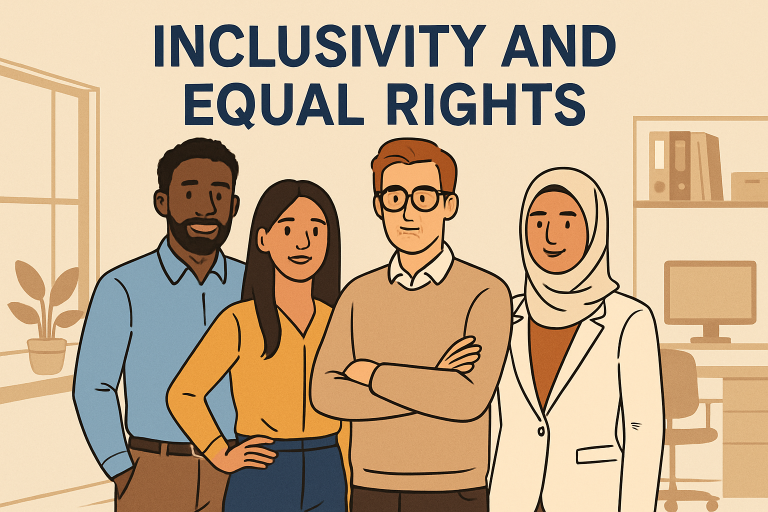Recent developments in employment practices reflect a growing emphasis on fairness, inclusion, and worker safety. Governments are updating labor laws to address remote work, pay transparency, and data privacy, while organizations are adopting technology to enhance compliance and employee engagement. Mental health initiatives, flexible scheduling, and stronger anti-discrimination measures are becoming standard expectations rather than optional benefits. At the same time, employees are more aware of their rights and proactive in advocating for equitable treatment. This evolving landscape encourages collaboration between employers and workers to create modern workplaces that are ethical, resilient, and supportive of long-term well-being.
Introduction
In today’s evolving workplace, keeping up with the latest employee rights and protections changes is critical for companies and workers. The landscape of employment law is shifting as state and federal policies adapt to new social, technological, and economic realities. From expanded anti-discrimination laws to increased protections for remote and gig workers, contemporary employment trends demand close attention and adaptation. For employees navigating complex disputes, finding experienced Denver employment lawyers can significantly resolve issues and protect workplace rights.
Employers, meanwhile, must remain vigilant as government agencies increase scrutiny on workplace technologies and strengthen mental health requirements. This heightened attention aims to create safer, more equitable environments and introduces new compliance challenges. The following analysis explores the most influential trends reshaping employee rights, with practical considerations for business leaders and workers.
These emerging trends not only reflect legal changes but signal shifting social priorities. Employers are expected to go beyond basic compliance, fostering a culture of inclusivity, privacy, and employee well-being. For practical insights on these issues, see recent coverage by major outlets such as The New York Times exploring workplace law evolution.
Expansion of Anti-Discrimination Protections
Anti-discrimination protections have been markedly broadened through recent legislation. For example, California’s Senate Bill 1137 explicitly bans caste-based discrimination in employment, addressing a gap for minority groups and emphasizing the state’s commitment to inclusivity. This trend mirrors federal developments; following the 2020 Supreme Court Bostock ruling, discrimination based on sexual orientation or gender identity now clearly falls under Title VII protections. The widespread impact of this decision has prompted employers nationwide to review and amend their policies, ensuring coverage extends to all employees regardless of gender identity or sexual preference.

These developments mean employers update training, revisit anti-harassment policies, and explicitly recognize a wider set of protected classes. Meanwhile, employees benefit from more robust legal recourse and increased confidence in pursuing a discrimination-free work environment.
Scrutiny of Workplace Technologies
The rapid adoption of workplace technologies—such as wearable devices and artificial intelligence (AI) for hiring—has ushered in complex questions about privacy, fairness, and surveillance. The Equal Employment Opportunity Commission (EEOC) recently highlighted concerns that mandatory wearables or biometric tracking could inadvertently result in discrimination, particularly if data reveals disabilities, medical conditions, or other protected traits. Legal experts warn that even well-intended technology deployments may backfire if employers aren’t transparent or fail to implement adequate safeguards.
AI-driven hiring tools are another area of concern. Regulators and courts have begun pressing employers to regularly audit algorithms for potential bias and ensure their HR tech does not reinforce historic inequalities. Adopting bias mitigation protocols and offering clear communication around how technology is deployed are becoming standard requirements, as ongoing legal scrutiny compels organizations to examine their digital HR practices closely.
Emphasis on Mental Health and Well-being
The heightened prioritization of mental health in the workplace is one of the defining trends of the last several years. Spurred by shifting societal norms and the long-term effects of the pandemic, organizations are now expected to create robust mental health strategies for their staff. This involves more than just providing an employee assistance program—it also means reevaluating workload, communication norms, and the psychological impact of new technologies.
Studies have found that digital technologies can offer support but also contribute to stress or burnout when overused or poorly managed. Proactive organizations employ initiatives such as resilience workshops, policies addressing right-to-disconnect, and access to mental health resources. When implemented thoughtfully, these approaches enhance employee well-being and foster workforce retention, productivity, and creativity.
Strengthened Rights for Remote and Gig Economy Workers
The COVID-19 pandemic fundamentally changed perceptions of remote work, and today’s legal frameworks are catching up with that new reality. Many employers have structured remote work policies that clarify expectations around data security, device usage, and work hours. In addition, laws in some states now require companies to explicitly address privacy concerns—such as monitoring practices and data protection measures—for telecommuting employees.
The gig economy remains another high-stakes area, with legislative debates continuing around worker classification, minimum wage, and benefits eligibility. Policy changes and expected civil penalties have prompted gig platforms and traditional employers alike to reevaluate hiring and compliance strategies, especially as federal enforcement of immigration and labor standards intensifies. For more, NPR has published an in-depth look at the ramifications for gig workers as legislative initiatives develop.
Conclusion
Workplace protections are significantly transformed, influenced by evolving legislation, technological advancements, and growing awareness of privacy, inclusivity, and mental health. Employers must go beyond meeting basic compliance requirements—actively cultivating policies and cultures prioritizing fairness, transparency, and well-being. This includes updating data protection protocols, addressing discrimination, and creating flexible environments that support diverse needs. On the other hand, employees benefit by understanding their rights, using available reporting mechanisms, and participating in workplace dialogues promoting safety and respect. Continuous education and collaboration are vital as governments and industries redefine labor standards. Employers and employees are responsible for adapting to change and ensuring that workplaces remain compliant while being empowering, equitable, and forward-thinking. Together, they can build a foundation that protects people, enhances trust, and strengthens organizational resilience in the face of future challenges.

